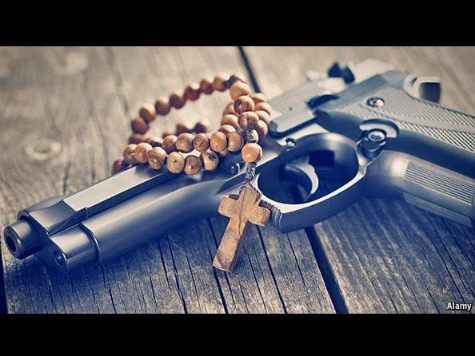On August 1, The Economist claimed America averages one mass shooting a day, and they countered the impulse to use a gun to defend oneself from mass shooters by suggesting “the impulse to self-defense… is natural, but mistaken.”
How did The Economist arrive at the conclusion that America averages one mass shooting a day? They do it by relying on the same study CNN’s Fareed Zakaria relied on when he said one mass shooting a day is “almost literally true.”
The study was put forward by Shooting Tracker, a group that defines a mass shooting as an incident “when four or more people are shot in an event, or related series of events, likely without a cooling off period.” Do there have to be fatalities? No. Do there have to be critical injuries? No. Just gunshot injuries, period. This method of discerning what is or isn’t a mass shooting is completely at odds with the common threshold of requiring homicides in order to consider an event a mass shooting.
For example, in the latest study by the Congressional Research Service (CRS), the criteria for a mass shooting is explained as follows:
Mass Shooting – which means a multiple homicide incident in which four or more victims are murdered with firearms—not including the offender(s)—within one event, and in one or more locations in close geographical proximity.
Mass Public Shooting – which means a multiple homicide incident in which four or more victims are murdered with firearms—not including the offender(s)—within one event, and at least some of the murders occurred in a public location or locations in close geographical proximity (e.g., a workplace, school, restaurant, or other public settings), and the murders are not attributable to any other underlying criminal activity or commonplace circumstance (armed robbery, criminal competition, insurance fraud, argument, or romantic triangle).
Note the emphasis on homicides. Because of this, CRS explains that America averaged “21 mass shootings” a year during the years 1999-2013 and “4.4 mass public shootings” a year during that same time frame. On the other hand, with the lowered threshold used by Shooting Tracker, The Economist and CNN’s Zakaria were able to claim about one mass shooting a day for the first 207 days of 2015.
After using these inflated numbers and scaring the wits out of readers, The Economist advises Americans not to give into the urge to buy a gun for self-defense. Here is how The Economist worded it: “This impulse to self-defence in kind is natural—but mistaken.”
How do they know it is “mistaken?” They claim to know because an FBI study released two months before the 2014 midterm elections told them so. That study suggested fleeing, cowering, or even the act of unarmed people subduing armed attackers, had been among the most effective responses to mass shooters. Ironically, at the time of its release, the study was broadly seen as a political ploy Democrats could use for talking points on the campaign trail.
Then, during the first week of June 2015, the authors of the study recanted their findings. After using the study to claim mass shootings were on the rise and were likely to continue rising, they then admitted their data was “imperfect.” And according to the Wall Street Journal, the authors of the study went so far as to intimate that they made up some of the data in lieu of extant data on the topic. The authors of the study said, “Because official data did not contain the information we needed, we had to develop our own.”
So there you have it. The Economist claims a huge uptick in mass shootings and then encourages Americans not to arm themselves for self-defense based on research that doesn’t meet Congressional research thresholds for ascertaining mass shootings and a study written for the FBI which has since been proven false–by its own authors no less.
Follow AWR Hawkins on Twitter: @AWRHawkins. Reach him directly at awrhawkins@breitbart.com.

COMMENTS
Please let us know if you're having issues with commenting.